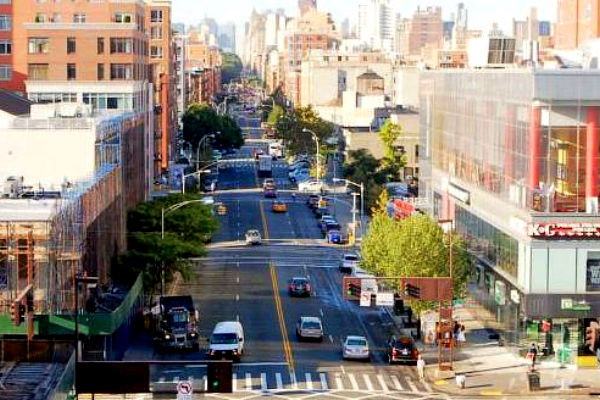 As Duke Ellington sang, taking the A train is the quickest way to Harlem. But once there, where do you go if you want a taste of the neighborhood’s history? The venues listed here are iconic, with each playing a role in building and shaping Harlem’s history. All aboard…
As Duke Ellington sang, taking the A train is the quickest way to Harlem. But once there, where do you go if you want a taste of the neighborhood’s history? The venues listed here are iconic, with each playing a role in building and shaping Harlem’s history. All aboard…
Minton’s Playhouse
Described as the birthplace of Bebop, Minton’s Playhouse is both an icon of Harlem and the wider jazz scene. Founded by and named after the saxophonist Henry Milton in 1938, the venue played host to a veritable Who’s Who of black musicians: Dizzy Gillespie, Thelonius Monk, Ella Fitzgerald, Sarah Vaughan, and more.
A 1974 fire at the Cecil Hotel (where the venue was located) led to a period of abandonment. But it was refurbished and reopened, and it is now listed on the National and the New York State Register of Historic Places. Today, Milton’s Playhouse maintains its jazz and swing roots, with a calendar full of modern and classic jazz acts.
Renaissance Ballroom & Casino
The Renaissance Ballroom & Casino began life as a theater, playing host to dance marathons, films, boxing matches, and more. And while today gamblers can play roulette at both land and online casinos, during Prohibition-era Harlem it was heavily policed.
Once Prohibition ended in 1933, the Renaissance flourished as a casino as well as a thriving music venue. The Renaissance saw more than its fair share of jazz artists, including Cootie Williams and Fletcher Henderson.
Known affectionately by its patrons as the “Renny”, the venue is unique in that it was both built and owned by African-Americans. Indeed, during the Twenties, the Renny became known as a ‘Black Mecca’.
Unfortunately, the venue fell into disrepair. But even then it won cinematic fame, serving as the setting for a crack den in Spike Lee’s Jungle Fever in 1991. Today, developers are attempting to transform the venue into a mixed-income residential complex, although the project faces criticism by local community groups.
Alhambra Ballroom Inc
Built-in 1905, the Alhambra Ballroom Inc began life as a theater under the name of the Harlem Alhambra. Seating 1,650 customers, space hosted a variety of vaudeville acts before transforming into a movie theater.
But in 1929, the venue opened an upstairs ballroom, with the likes of Cab Calloway and Duke Ellington setting foot upon the Alhambra’s stage. In its heyday, you could even spy a certain Billie Holiday at the venue, albeit as a waitress rather than a singer.
Alas, the Alhambra fell into dilapidation during the Sixties, its arched ceilings sagging and paint peeling. But in 2003, the venue reopened as the Alhambra Ballroom Inc. The venue is bookable for weddings, birthdays, and other events, so you can tread the same floors as some of the greats of the swing era.
Apollo Theater
For many, Harlem was the capital of swing during the Thirties and Forties. Big names with big bands and even bigger sounds flocked to the neighborhood during the era and virtually all of them made a stop at the renowned Apollo Theater.
With its plush red carpets and beaming gold furnishings, the Apollo Theater was, appropriately, a true venue for the gods of swing. In its heyday, the Apollo Theater hosted big names such as Duke Ellington, Dizzy Gillespie, and Count Basie.
But while its roots lie in swing, the Apollo Theater is also a hub for the black music scene as a whole. In 2016, a memorial service was held in the venue for A Tribe Called Quest’s Phife Dawg. Attendees included Kanye West, Andre 3000, and D’Angelo, amongst other icons of the rap, soul, and hip-hop scene.
If you find yourself in Harlem and hankering for a hint of its history, the venues listed above will surely sate your appetite. From iconic jazz venues to cinematic backdrops, Harlem has it all.
Where will you visit first?
Photo credit: Looking West across A train on 125th Street.
Become a Harlem Insider!
By submitting this form, you are consenting to receive marketing emails from: Harlem World Magazine, 2521 1/2 west 42nd street, Los Angeles, CA, 90008, https://www.harlemworldmagazine.com. You can revoke your consent to receive emails at any time by using the SafeUnsubscribe® link, found at the bottom of every email. Emails are serviced by Constant Contact








